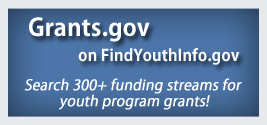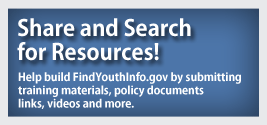LGBT
Approximately 1.6 million U.S. youth (about seven percent of all youth) between the ages 12 and 17 ran away from home and experienced at least one night of homelessness in 2002.1 Although studies on the percentage of homeless youth who are LGBT vary, analyses suggest that approximately 20 to 40 percent of these youth identify as a sexual or gender minority. Current studies, as well as anecdotal evidence from social service professionals, suggest that LGBT youth are significantly overrepresented in homeless populations.2 LGBT youth experience homelessness at higher rates than non-LGBT youth for a range of reasons, including family rejection and abuse,3 and a history of physical or sexual abuse.4
In shelters, searching for housing, and on the streets, these youth may endure traumatic experiences, such as harassment, stigmatization, or abuse from peers and shelter staff as a result of their sexual orientation and/or gender non-conformity.5 Youth may have difficulty finding housing and may be asked to leave shelters after revealing their sexual preference. As a result of harassment and negative experiences in shelters, LGBT youth are more likely to live on the streets than their heterosexual peers and are especially vulnerable to physical and sexual exploitation.6 LGBT youth who are homeless also experience high rates of conduct disorder, post-traumatic stress, and suicidal behavior.7
To address these challenges, LGBT youth who are homeless or in out-of-home care need protection from harassment, access to culturally appropriate support, and equal treatment and supportive services.8 It is important for shelters, transitional housing, and permanent housing to promote positive youth development, provide safe spaces for LGBT youth, offer family reconciliation services, and connect youth to community resources and services.9
View the LGBT youth topic to learn more about LGBT youth.
Resources
Homelessness Resource Center: Homeless Populations
The Homelessness Resource Center (HRC) is managed by the Homeless and Housing Resource Network (HHRN), supported by the Substance Abuse and Mental Health Services Administration. The HRC is an interactive community of providers, consumers, policymakers, researchers, and public agencies at federal, state, and local levels. It shares state-of-the-art knowledge and promising practices to prevent and end homelessness through the following:
• Training and technical assistance
• Publications and materials
• On-line learning opportunities
• Networking and collaboration
The HRC includes resources focused on youth as well as on lesbian, gay, bisexual, transgender, questioning, intersex, or two- spirit (LGBTQI2-S) youth. Intersex is defined as individuals with medically defined biological attributes that are not exclusively male or female. These youth are frequently “assigned” a gender at birth, which may differ from their gender identity later in life. Two-spirit is a culture-specific general identity for Native Americans (American Indians and Alaska Natives) with homosexual or transgender identities.10
Learning from the Field: Expert Panel on Youth Who Are LGBTQI2-S and Homeless (Summary of Proceedings) (PDF, 50 pages)
This document highlights key issues, strategies, best practices, and next steps for collaboration between the Homelessness Resource Center and other stakeholders to address LGBTQI2-S youth who are experiencing homelessness.
United States Interagency Council on Homelessness
This website, sponsored by the United States Interagency Council on Homelessness, includes information and resources on homelessness in the United States including a section focused on LGBT youth.
1 Substance Abuse and Mental Health Service Administration, 2004
2 Ray, 2006
3 National Alliance to End Homelessness, n.d.
4 Center for American Progress, 2010; National Alliance to End Homelessness, n.d.
5 Homelessness Resources Center, n.d. Homeless Resource Center, 2010; Kenney, Fisher, Grandin, Hanson, & Winn,2012; Ray 2006
6 Lambda Legal, National Alliance to End Homelessness, National Network for Youth & National Center for Lesbian Rights, 2009
7 Ray, 2006
8 Matarese, 2012
9 Homeless Resource Center, 2010
10 Poirier et al., 2008
Youth Topics
Collaboration Profiles
Feature Articles
Tools & Guides
Programs
Technical Assistance
Websites
Publications
Videos & Podcasts
Departments


Announcements
Youth Topics

Map My Community is a tool designed specifically to assist you in locating resources in your community to help you build and strengthen your youth program. Get ideas for new partnerships, identify gaps in your community, and learn about resources to avoid duplication of effort.


















